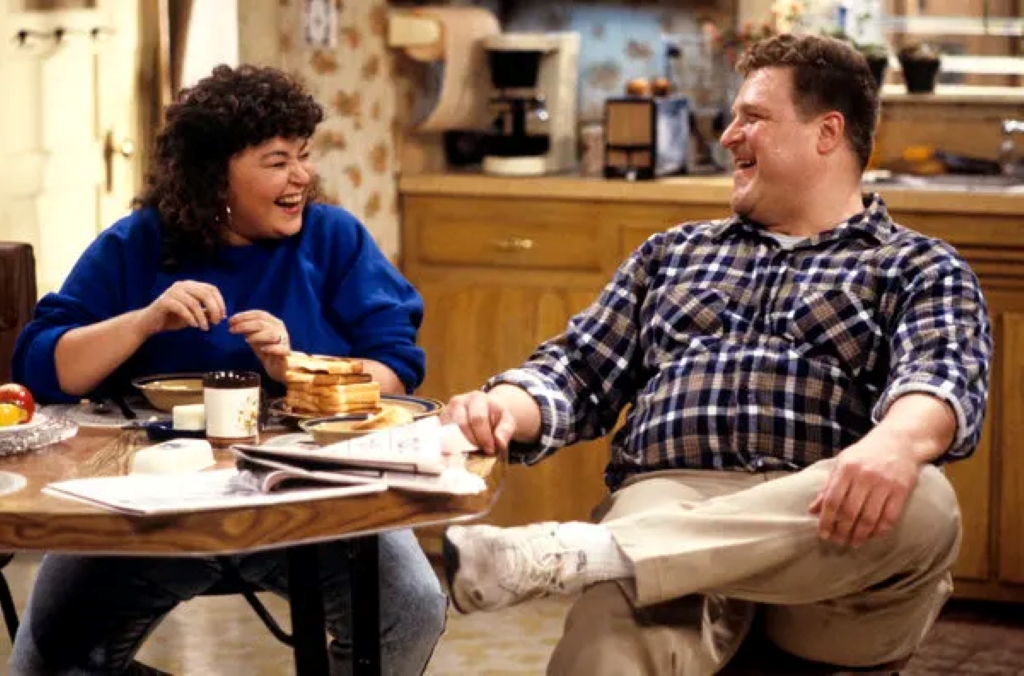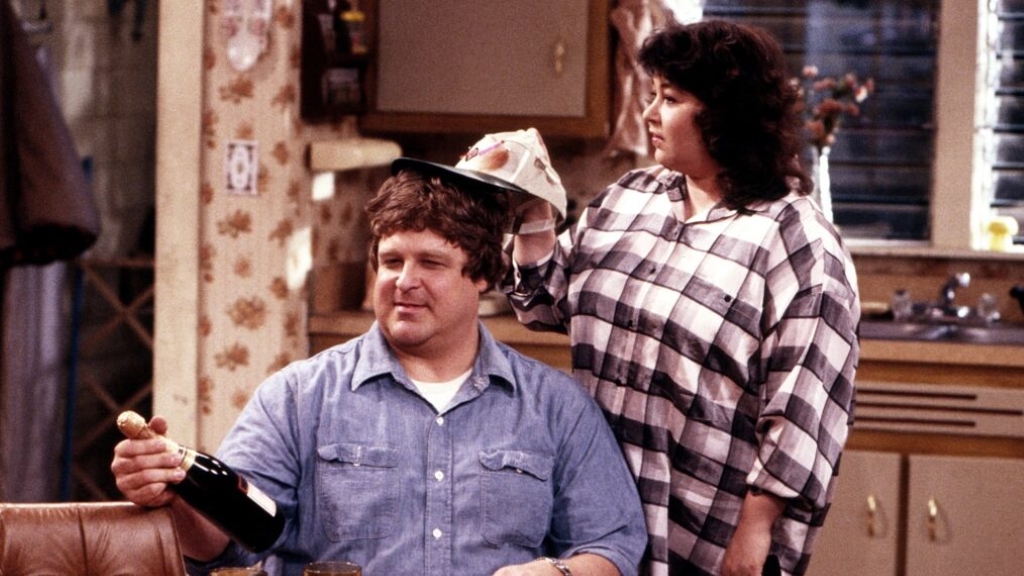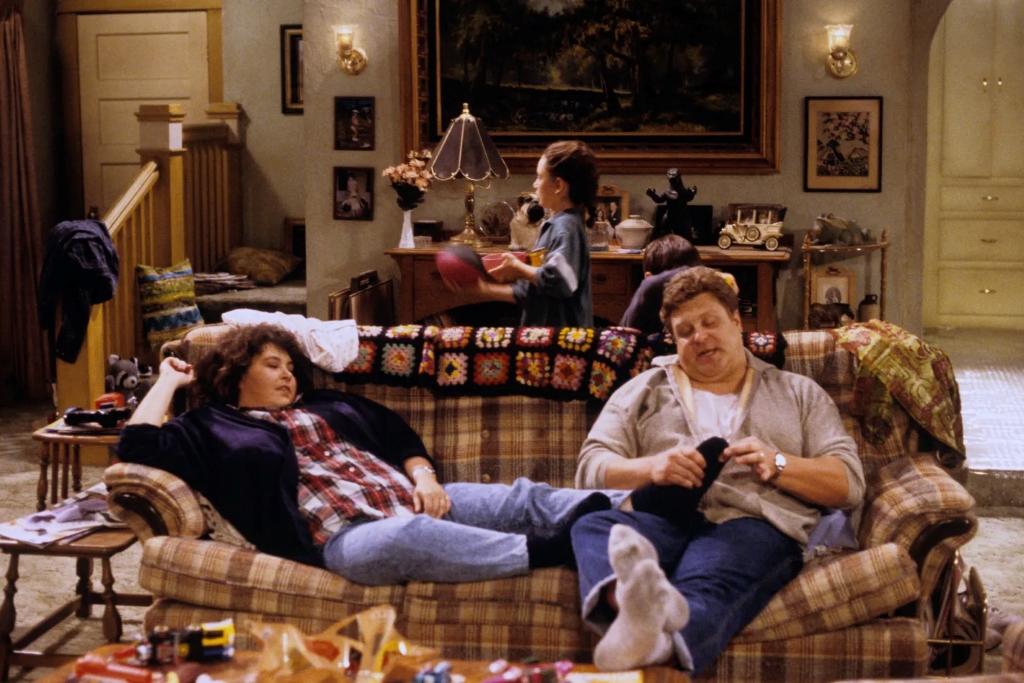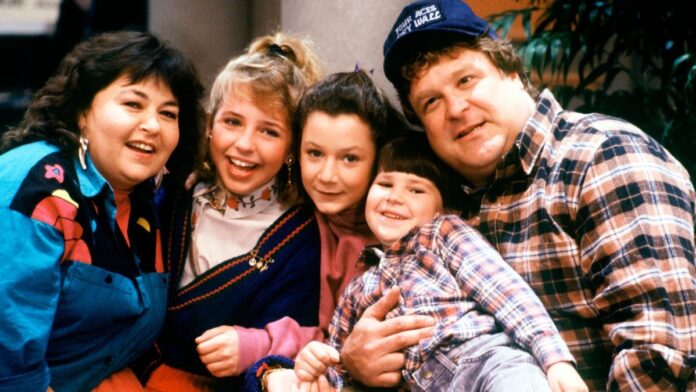Roseanne Barr, a name that can provoke strong reactions from both her fans and critics, stands as one of the most polarizing figures in television history.
This comedian’s tumultuous personal life and her behind-the-scenes conduct on the set of Roseanne provided tabloid fodder throughout the ’90s.
Meanwhile, her onscreen persona emerged as the quintessential feminist icon of the working class.
Roseanne Barr, undeniably gifted and perpetually provocative, shattered conventional expectations of female behavior, leaving a trail of outraged individuals in her wake.
The Show Roseanne, which premiered in 1988, served as a reflection of its creator’s societal concerns.
Roseanne Barr aimed to draw from her own roles as a mother, a feminist, and a woman who intimately understood the struggles of the working class due to her own background.
This approach was undeniably groundbreaking. While the ’80s and ’90s featured other sitcoms with feminist themes, such as “Murphy Brown” and “Designing Women,” their protagonists all belonged to the middle class.
Economic hardships were not their primary concern, allowing them to focus on gender equality without confronting the challenges of poverty.
Roseanne offered a distinctive perspective. The character Roseanne Conner did not embody glamor; she began the series working in a plastics factory alongside her husband, Dan, to provide for their three children.
She confronted workplace inequality and managed household responsibilities. This portrayal redefined the concept of a “domestic goddess,” presenting one who was weary, sarcastic, and outspoken.
Much like Roseanne, the performer, the character Roseanne seemed impervious to others’ opinions.
Her focus was on guiding her children through the challenges of adolescence and keeping the lights on, not on superficial concerns.
Her home was modest, her clothing practical, and she often used the word “ain’t.” Strikingly, this portrayal did not create a character that felt uncouth.
Roseanne’s intelligence was unquestionable, evident in her sharp wit. Audiences did not laugh at Roseanne; they embraced her as one of their own.
Marcy Carsey and Tom Werner, producers of The Cosby Show, were initially inspired by Barr’s “working-class domestic goddess” stand-up routine.
They intended to create a sitcom centered around factory workers, with Matt Williams as the show’s initial helmsman.
While Barr’s routine and her personal anecdotes heavily influenced the series, the Writers Guild officially recognized Matt Williams as the series creator.
This initial dispute over the series creator title marked the beginning of Barr’s ongoing struggle for creative control over “Roseanne.”
Barr’s background immediately marked her as an outsider in Hollywood.
The television industry is predominantly comprised of individuals with connections within the industry or hailing from affluent and middle-class backgrounds.
For example, Carsey graduated from the University of New Hampshire, worked as an NBC tour guide, and then transitioned into her producing career.
In contrast, Barr came from a working-class neighborhood in Salt Lake City.
Both women identified as feminists, but due to her privileged position, there were aspects of Barr’s journey that Carsey could never fully comprehend.
The specific details of the behind-the-scenes disputes surrounding Roseanne remain unclear, as both sides maintain conflicting accounts.
However, Barr’s core concern was preserving the authenticity of the series. Her infamous “tantrums” stemmed from her desire to retain creative control.
Roseanne was intensely personal to Barr; it was her own story, with both its positives and negatives.
The way her efforts to protect her authorship have been framed as petulant immaturity reflects the general reaction she encountered upon entering Hollywood.
She was perceived as a rising star in need of management when, in reality, she was a creator, albeit one with her share of issues (the numbers fiasco stands out as a particularly troubling anecdote illustrating her efforts to assert her growing influence).

The first season concluded with an episode that directly tackled issues mirroring Barr’s real-life struggles—workplace harassment, patriarchal oppression, and integrity.
In ‘Let’s Call It Quits,’ Roseanne confronted a new factory supervisor who aimed to increase the workers’ daily quotas to unreasonable levels.
The supervisor perceived Roseanne as a threat to his authority and attempted to coerce her into compliance in exchange for lower quotas.
Throughout the episode, he used demeaning language, referring to Roseanne and her female colleagues as “doll” or “sweetheart” and even likening them to cows at one point.
The most humiliating moment for Roseanne came when she was compelled to address her new boss as “sir.”
The episode concluded with Roseanne and her female co-workers quitting their jobs in defense of their integrity.
This episode, as a culmination of a season that witnessed Barr’s battle to regain control of the series from Williams, carried a strong sense of catharsis.
Onscreen, Barr was instrumental in sparking a cultural shift. Roseanne entered the top ten in Nielsen ratings during its first season and maintained that position until its eighth season.
Americans viewed Roseanne as a kindred spirit because her onscreen family faced the same challenges that their own families, struggling through the recession in the late ’80s and early ’90s, were experiencing.
Even the National Anthem controversy couldn’t diminish her popularity.
As the show continued to flourish, Barr encountered less interference from the network.
Williams was no longer part of the series after the first season, and there was a revolving door of writers.
In her 2010 New Yorker editorial titled “And I Should Know,” Barr reflected on this period:
But at least everyone began to credit me. I was assumed to be a genius and eccentric instead of a crazy bitch, and for a while it felt pretty nice.
In light of recent events, the themes of Roseanne remain relevant.
With the country once again facing economic uncertainty, the challenges of the Conner family continue to resonate.
The current television landscape lacks characters like Roseanne to a great extent.
While several shows briefly acknowledge persistent joblessness and financial crises, only ABC’s The Middle and Showtime’s Shameless are dedicated to showcasing lower-income families prominently.
However, neither of these shows features a character as unapologetically feminist as Roseanne Conner.

What made Roseanne particularly significant was the intersection of class issues with feminism.
In the series’ second Halloween episode, “Trick or Treat,” we witness Roseanne dressing as a lumberjack for Halloween.
She convincingly passes as a man and experiences the world from a male perspective for the evening.
This includes comical moments like her visit to a urinal but also delves deeper into examining how men interact with each other and with women from a female standpoint.
In a later episode in season six, Roseanne questions her sexuality after receiving a kiss from a woman in a gay bar.
Over its nine-year run, Roseanne tackled taboo issues related to sexuality, including candid discussions about birth control, masturbation, gender stereotypes, and coming out.
Aside from a few missteps in the later seasons, the series adeptly addressed these social topics by seamlessly incorporating moments of significance amidst the humor.
In its final season, Roseanne took an unexpected turn when the Conners suddenly became lottery winners.
The intention was to somewhat mirror Barr’s own life journey and explore the ups and downs of a shift in social class.
However, the Conners’ newfound wealth ultimately stripped the family of its relatability. Watching Roseanne indulge in shopping sprees felt out of place after years of frugality.
In the series finale, Barr made the controversial decision to reveal that the entire lottery storyline had been a product of Roseanne’s imagination.
In reality, she had been working on a novel for several seasons.
While the finale faced criticism from both critics and fans, Barr expressed her fondness for it, stating:
At that point, I felt like I had earned the right to do what I wanted to do. I waited until the last season of my show to say what I wanted to say and do exactly what I wanted to do. To heck with the critics, the network, the viewers, everyone except myself and God. It was very personally rewarding.

Looking back, the unconventional ending was appropriate for a show steered by a woman determined to retain creative control at any price.
Both Roseanne, the character and the actress behind her, were shown to be masters of their own narratives, endeavoring to impose order on the capricious and disorderly events of life that would otherwise remain beyond their grasp.
While it might not be an ending embraced by anyone other than Barr or Roseanne Conner, the essence of this creator and her creation lies in the fact that neither of them requires validation from anyone apart from themselves.
Read More: Rosa Peral Wikipedia: The Burning Body Miniseries Explained!


